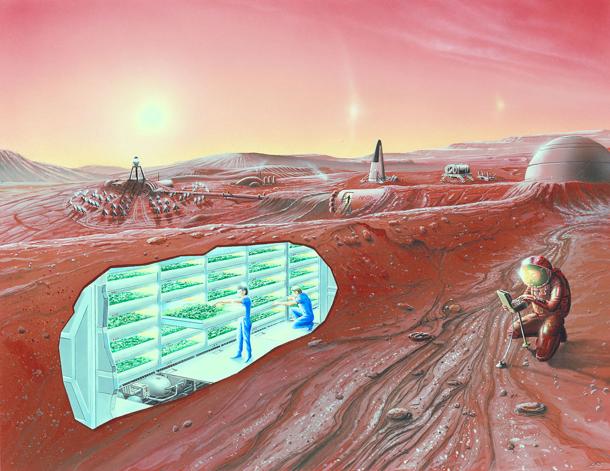
Even though lettuce is not the most nutritiously rich plant, by studying its growth on Mars we are opening the doors for other richer plants, such as tomatoes and strawberries, to be transported and cultivated on a foreign planet.
Before achieving the goal of Mars One, a human settlement on Mars, it is necessary to show that humans can live and get their own supplies there. And of course, Mars settlers need to eat! That’s why we want to demonstrate that lettuce can be grown on Mars.
Lettuce and other plants have now been grown on ISS for years, similar experiments were done on earth, showing that plant growth is possible with and without gravity. The current closed box systems bring everything needed from Earth.
Now we want to take the next step, from a closed ecosystem to a system enriched by the environment of another planet.
The mission to Mars gives us the unique opportunity to use resources available on Mars.
This is not just an interesting step for science, it is a step necessary for settlement on Mars:
Any successful colony needs to be as self sufficient as possible, making as much use of the resources on Mars as possible. With LettuceOnMars we lay the stepping stones for larger greenhouses, supplying Oxygen and a variety of edible plants to settlers on Mars.
Sequence of events:

Cruise
During cruise the payload will be powered down and inactive. The lettuce seeds will be frozen. The journey will take around 7 months.

Landing
When it has landed, heaters surrounding the growth chamber will maintain a temperature of 21-24°C. Mars has a temperature of -63ºC and pressure one hundredth of Earth’s.

Setup
Carbon Dioxide will be heated and pressurised from the Martian atmosphere. Oxygen will be produced by electrolysis of water brought from Earth. Some water with dissolved nutrients will be vaporised in the growth chamber.

Lettuce growth
These conditions will start seed germination. Light from both the sun and LEDs in the top of the greenhouse will enable photosynthesis. Throughout their growth sensors will transmit regular telemetry back to Earth. In addition, photographs taken by the camera located inside the growth chamber will be used to provide a visual record of the growing lettuce.

Mission success!
The lettuces will take approximately 4 weeks to grow to full size. Photographs taken by the camera inside the growth chamber will be transmitted back every day along with sensor data.

Termination
Upon completion of the mission and following a pre-determined signal, the heaters will be activated at higher power to exterminate all life in the payload, preventing any possible contamination risk.
– See more at: https://community.mars-one.com/projects/mars-micro-greenhouse#sthash.lkPfmI8j.dpuf
Source: http://www.lettuceonmars.com/